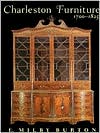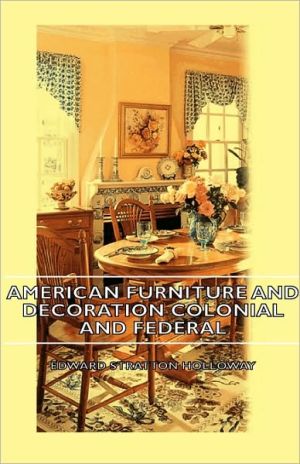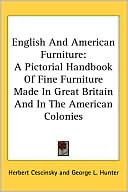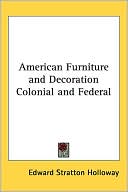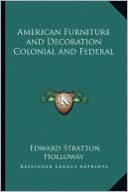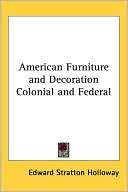Charleston Furniture, 1700-1825
For fashion, elegance, and wealth, the port city of Charleston, South Carolina, flourished without parallel in Colonial America, and the furniture that filled its fine homes reflected the prosperity and sophistication of its strikingly urbane population. E. Milby Burton's classic study illustrated with more than 140 photographs, catalogues the trends in design and changes in taste of a city that amassed some of the finest furniture in North America. Burton attributes the abundance and...
Search in google:
For fashion, elegance, and wealth, the port city of Charleston, South Carolina, flourished without parallel in Colonial America, and the furniture that filled its fine homes reflected the prosperity and sophistication of its strikingly urbane population. E. Milby Burton's classic study illustrated with more than 140 photographs, catalogues the trends in design and changes in taste of a city that amassed some of the finest furniture in North America. Burton attributes the abundance and diversity of Charleston furnishings to the port city's cosmopolitanism as well as to the burgeoning fortunes and vibrant social lives of its inhabitants. He tells how rich planters and merchants vied with one another to see who could give the grandest dinners and balls and how their furnishings fulfilled their extensive entertaining requirements while showcasing their affluence. Burton profiles the remarkable number of local cabinet makers and other skilled craftspeople, including some African American slaves and freedmen, who supplied the city and surrounding plantations. He also traces the importation of furniture from England and other parts of North America. Drawing extensively on the meticulously maintained account book of Thomas Elfe, kept from 1768 to 1775, Burton provides a detailed portrait of the types, styles, prices, and quantities of furniture owned by members of Charleston society. He documents the Charlestonian passion for English, then French, and then New York fashions; the lavish use of reasonably priced mahogany from the West Indies; and the penchant for beautifully crotched mahogany veneer. While lamenting the current dearth of colonial and early republic Charleston-made furniture, he identifies innovations and peculiarities that distinguish locally made furniture of the periods, including movable headboards and bed slats used in place of the customary rope or canvas sacking.
